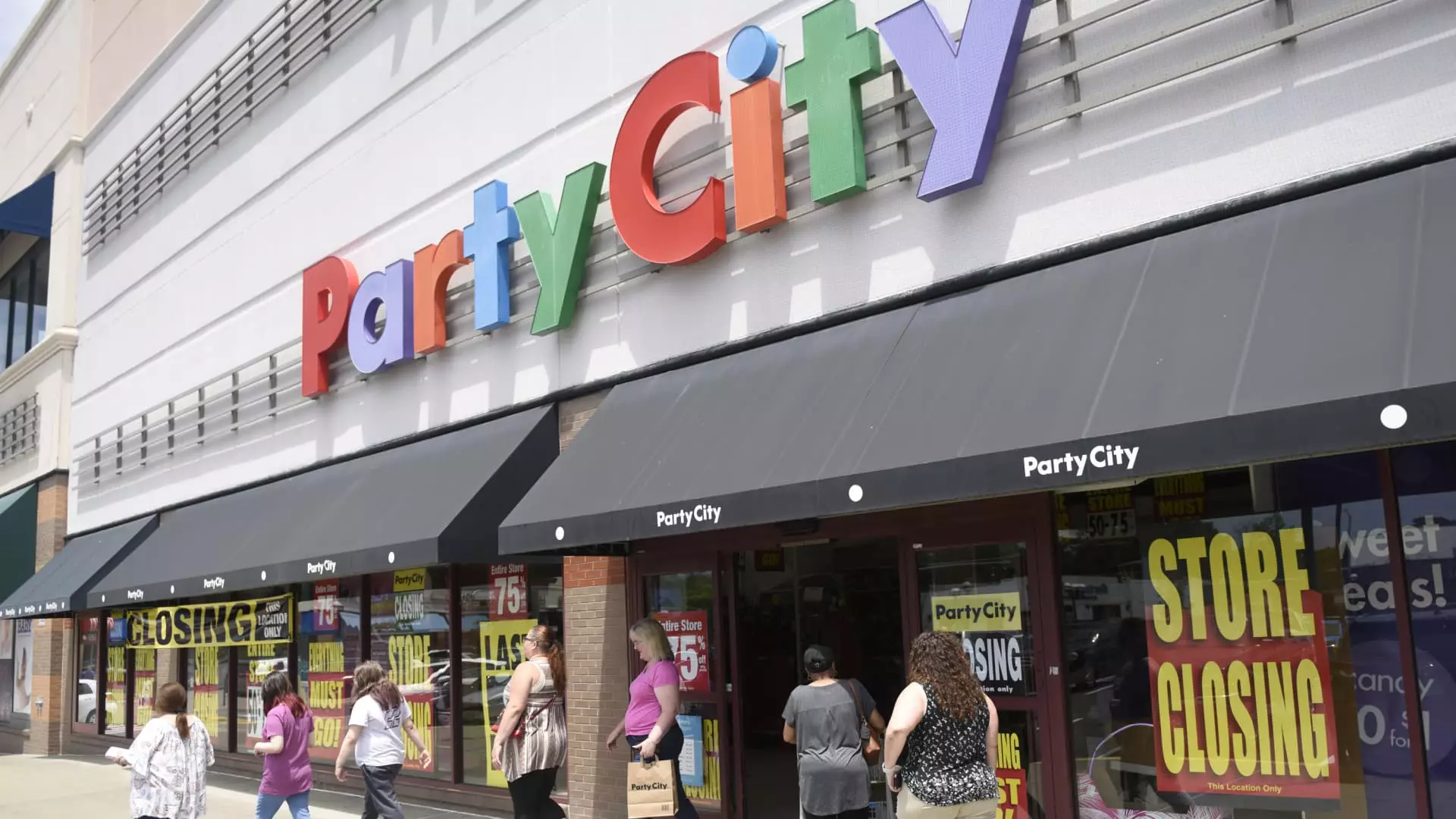The retail environment in the United States is undergoing unprecedented transformations, marked by a record number of store closures amidst shifting consumer behaviors and economic challenges. This article delves into the reasons behind the current wave of retail bankruptcies and store shut-downs while examining what path the industry might take moving forward.
The fallout from the COVID-19 pandemic significantly expedited changes in retail dynamics, pushing many traditional retailers to the brink. Data from Coresight Research reveal that the closures affecting major players like Party City and Macy’s amounted to over 7,300 stores in 2024, the worst performance since the pandemic’s onset. As of January 10, 2025, retailers had already announced another 1,925 closures, setting a grim tone for the year ahead. These closures not only highlight a crisis in the sector but also reveal a bifurcation where industry leaders are thriving while many legacy brands struggle to survive.
Retail giants such as Amazon, Costco, and Walmart have fortified their positions in the market by offering value and convenience, effectively siphoning sales away from many struggling retailers. Conversely, numerous smaller chains are either shuttering their doors or scaling back operations. The stark contrast in performance among these businesses speaks volumes about shifting consumer preferences and the relentless competition in an increasingly digital era.
The number of retail bankruptcies soared, illustrating the pressures faced in an evolving market where strategic adjustments are vital. The retail industry saw 51 bankruptcies in 2024, more than double the 25 reported the previous year. Retailers like Big Lots and Joann, which recently filed for bankruptcy protection, exemplify how far-reaching blows can destabilize even established brands. Despite robust consumer spending, which rose 4% during the holiday season compared to the previous year, the funds are predominantly gravitating toward a handful of dominant retailers, leaving those on the fringes to face severe challenges.
The retail landscape is particularly rough for specialty stores. With examples like Big Lots announcing a total closure following a failed sale, it is evident that many sectors within retail are reeling from the consequences of both competition and management decisions. Other chains, such as Family Dollar and CVS, also significantly contributed to the closure statistics, raising alarms about the long-term viability of some traditional formats in the retail sphere.
Analysts have found that retailers succumbing to closure often fall into distinct categories. Some close their doors entirely as part of liquidation efforts, while others downsize after filing Chapter 11 bankruptcy. Additionally, many retailers have revised their operational parameters to align with the rapid shifts in consumer behavior, as seen with drugstore chains and department stores like Macy’s, which is restructuring by closing nearly 150 locations nationwide.
John Mercer, a Coresight research executive, underscores that consumer demand remains steady, yet the distribution of that demand has irrevocably changed. The shift towards online shopping has created increased tensions among traditional retail outlets, compelling many to either adapt or perish. The entry of foreign e-commerce players like Shein and Temu further complicates matters by introducing intense competition for American retailers.
Despite the grim statistics, there are signs of resilience within the retail industry. Although store closures are anticipated to surpass openings in the U.S. this year, a notable increase in store openings was documented in 2024, with nearly 6,000 new store launches. New incumbents such as Aldi, JD Sports, and Burlington are among the retailers committed to expanding their presence.
Furthermore, the transition from traditional retail spaces to alternative uses, such as fitness centers or clinics, may present a unique opportunity to revitalize areas once dominated by retail shops. As populations shifted during the pandemic, so too did shopping behaviors and traffic patterns, reshaping where retailers choose to establish their brick-and-mortar locations.
With major retailers set to announce their financial results soon, stakeholders and consumers alike are eager to assess which businesses demonstrate resilience against ongoing upheavals. Moreover, companies like Kohl’s, which revealed closures for 27 underperforming stores, remind us of the persistent need for agility in an ever-changing marketplace.
The retail industry’s landscape is undeniably shifting, marked by both significant challenges and emerging opportunities. As traditional retailers grapple with closures and the consequences of bankruptcy, nimble companies that adapt and innovate are best positioned to thrive. While the current wave of store closures may seem discouraging, it also lights the path for brighter futures for those who understand and leverage the new rules of consumer engagement. The next few years will undoubtedly shape the very fabric of retail, redefining how consumers shop and what they value in their purchasing experiences.

